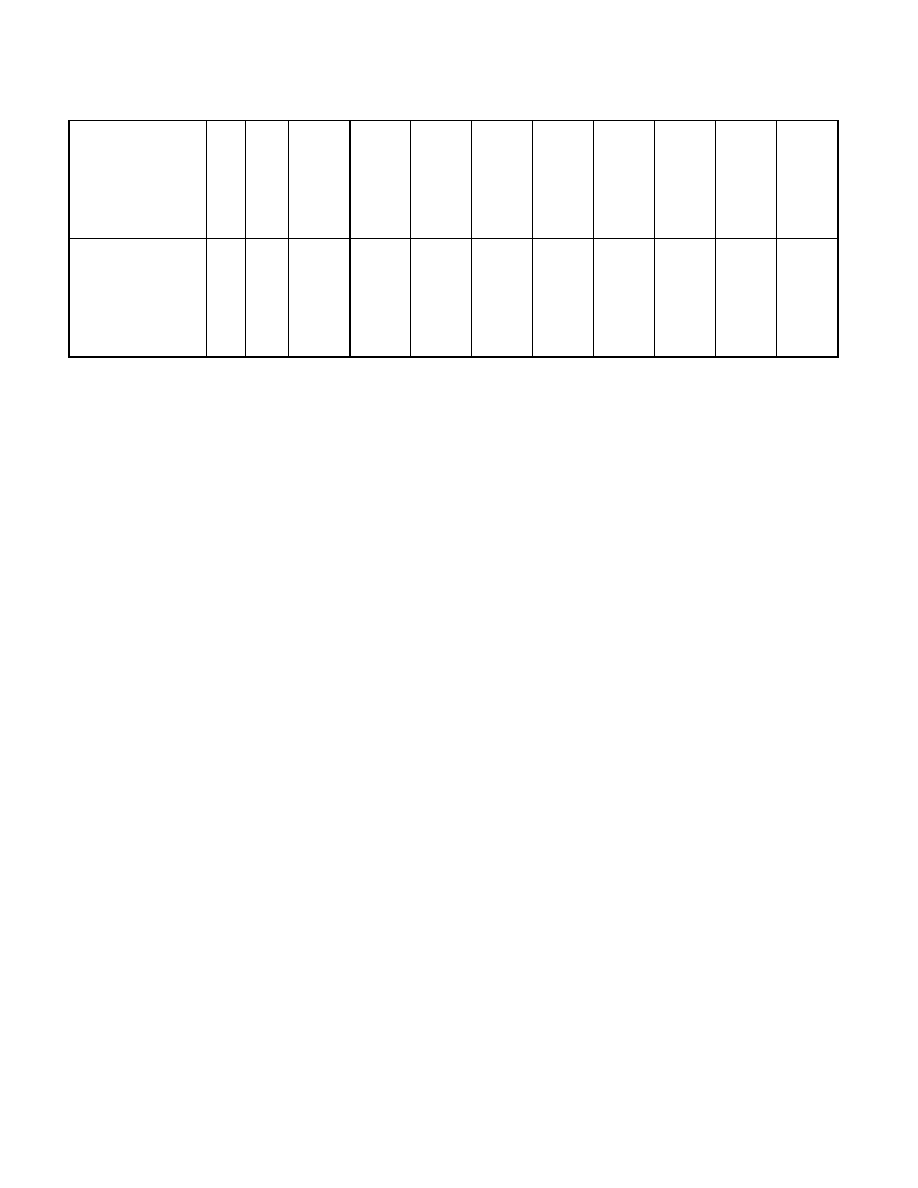
Vol. 2A 2-21
INSTRUCTION FORMAT
2.3.12.1 64-bit Mode VSIB Memory Addressing
In 64-bit mode VSIB memory addressing uses the VEX.B field and the base field of the SIB byte to encode one of
the 16 general-purpose register as the base register. The VEX.X field and the index field of the SIB byte encode one
of the 16 vector registers as the vector index register.
In 64-bit mode the top row of Table 2-13 base register should be interpreted as the full 64-bit of each register.
2.4
AVX AND SSE INSTRUCTION EXCEPTION SPECIFICATION
To look up the exceptions of legacy 128-bit SIMD instruction, 128-bit VEX-encoded instructions, and 256-bit VEX-
encoded instruction, Table 2-14 summarizes the exception behavior into separate classes, with detailed exception
conditions defined in sub-sections 2.4.1 through 2.5.1. For example, ADDPS contains the entry:
“See Exceptions Type 2”
In this entry, “Type2” can be looked up in Table 2-14.
The instruction’s corresponding CPUID feature flag can be identified in the fourth column of the Instruction
summary table.
Note: #UD on CPUID feature flags=0 is not guaranteed in a virtualized environment if the hardware supports the
feature flag.
NOTE
Instructions that operate only with MMX, X87, or general-purpose registers are not covered by the
exception classes defined in this section. For instructions that operate on MMX registers, see
Section 22.25.3, “Exception Conditions of Legacy SIMD Instructions Operating on MMX Registers”
in the Intel® 64 and IA-32 Architectures Software Developer’s Manual, Volume 3B.
VR0/VR8
VR1/VR9
VR2/VR10
VR3/VR11
VR4/VR12
VR5/VR13
VR6/VR14
VR7/VR15
*4
10
000
001
010
011
100
101
110
111
80
88
90
98
A0
A8
B0
B8
81
89
91
89
A1
A9
B1
B9
82
8A
92
9A
A2
AA
B2
BA
83
8B
93
9B
A3
AB
B3
BB
84
8C
94
9C
A4
AC
B4
BC
85
8D
95
9D
A5
AD
B5
BD
86
8E
96
9E
A6
AE
B6
BE
87
8F
97
9F
A7
AF
B7
BF
VR0/VR8
VR1/VR9
VR2/VR10
VR3/VR11
VR4/VR12
VR5/VR13
VR6/VR14
VR7/VR15
*8
11
000
001
010
011
100
101
110
111
C0
C8
D0
D8
E0
E8
F0
F8
C1
C9
D1
D9
E1
E9
F1
F9
C2
CA
D2
DA
E2
EA
F2
FA
C3
CB
D3
DB
E3
EB
F3
FB
C4
CC
D4
DC
E4
EC
F4
FC
C5
CD
D5
DD
E5
ED
F5
FD
C6
CE
D6
DE
E6
EE
F6
FE
C7
CF
D7
DF
E7
EF
F7
FF
NOTES:
1. If ModR/M.mod = 00b, the base address is zero, then effective address is computed as [scaled vector index] + disp32. Otherwise the
base address is computed as [EBP/R13]+ disp, the displacement is either 8 bit or 32 bit depending on the value of ModR/M.mod:
MOD Effective
Address
00b
[Scaled Vector Register] + Disp32
01b
[Scaled Vector Register] + Disp8 + [EBP/R13]
10b
[Scaled Vector Register] + Disp32 + [EBP/R13]
Table 2-13. 32-Bit VSIB Addressing Forms of the SIB Byte (Contd.)